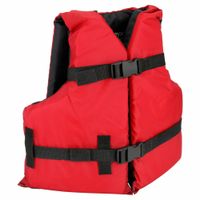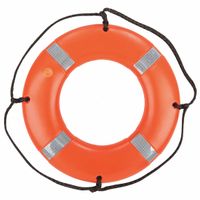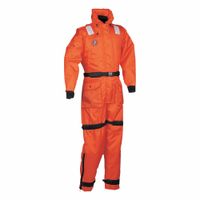Call +(254) 703 030 000 / 751 483 999 / 721 704 777
.....Read More
Frequently Asked Questions
What are the best life jackets for adults?
The best life jackets for adults are those that offer a combination of safety, comfort, and functionality. Here are some top options:
1. **Onyx MoveVent Dynamic Life Vest**: Known for its comfort and flexibility, this life jacket features mesh ventilation to keep you cool and adjustable side belts for a snug fit. It’s ideal for kayaking and other active water sports.
2. **Stohlquist Fit Adult PFD**: This life jacket is lightweight and offers a high level of comfort with its sculpted foam paneling. It’s a great choice for recreational boating and paddling.
3. **NRS Chinook Fishing PFD**: Designed specifically for anglers, it includes multiple pockets for gear storage and a high-back design that fits well with kayak seats. It’s both functional and comfortable for long days on the water.
4. **Astral BlueJacket**: This versatile life jacket is suitable for various water activities. It features a clamshell pocket for storage and a comfortable fit with its adjustable straps and foam panels.
5. **Stearns Adult Classic Series Vest**: A budget-friendly option, this life jacket is Coast Guard-approved and provides basic safety features. It’s suitable for general boating and water activities.
6. **Mustang Survival Corp M.I.T. 100 Auto Activation PFD**: This inflatable life jacket offers a slim profile and automatic inflation upon water immersion, making it ideal for those who prioritize mobility and comfort.
When choosing a life jacket, ensure it is U.S. Coast Guard-approved, fits properly, and is appropriate for the intended water activity. Comfort features like adjustable straps, breathable materials, and adequate buoyancy are essential for prolonged use.
How do personal flotation devices (PFDs) work?
Personal flotation devices (PFDs) work by providing buoyancy to keep a person afloat in water. They are designed to displace water, which creates an upward force counteracting the downward pull of gravity. This is based on Archimedes' principle, which states that an object submerged in a fluid is buoyed up by a force equal to the weight of the fluid displaced by the object.
PFDs are typically made from materials like foam or air-filled chambers that are less dense than water. Foam PFDs use closed-cell foam, which traps air and provides buoyancy. Inflatable PFDs have air chambers that can be manually or automatically inflated using CO2 cartridges. When inflated, these chambers increase the volume of the PFD without significantly increasing its weight, enhancing buoyancy.
PFDs are designed to keep the wearer's head above water, reducing the risk of drowning. They come in various types and designs to suit different activities and conditions. For instance, Type I PFDs are intended for offshore use and can turn an unconscious person face-up, while Type III PFDs are more comfortable and suitable for calm, inland waters.
Proper fit and usage are crucial for PFD effectiveness. A well-fitted PFD should be snug but comfortable, allowing for free movement while ensuring it doesn't slip off. PFDs should be worn at all times when on or near water, as accidents can happen unexpectedly.
In summary, PFDs work by providing buoyancy through materials that displace water, keeping the wearer afloat and reducing the risk of drowning. They are essential safety devices for anyone engaging in water-related activities.
What is the difference between a life jacket and a PFD?
A life jacket and a Personal Flotation Device (PFD) are both designed to keep a person afloat in water, but they have distinct differences in design, purpose, and usage.
A life jacket, also known as a life vest, is specifically designed to turn an unconscious person face-up in the water, ensuring that their airway remains clear of the water. It typically has more buoyant material concentrated around the chest and neck area, providing a higher level of flotation. Life jackets are often bulkier and more restrictive, but they offer superior safety, especially in rough waters or emergency situations. They are required by law in many jurisdictions for certain activities and are often brightly colored for visibility.
On the other hand, a PFD is a broader category that includes various types of flotation devices, including life jackets. PFDs are designed to provide buoyancy and assist a conscious person in staying afloat. They are generally less bulky and more comfortable, allowing for greater freedom of movement, which makes them suitable for activities like kayaking, canoeing, or sailing. PFDs come in different types, such as Type II, III, and V, each offering varying levels of buoyancy and features tailored to specific activities.
In summary, while all life jackets are PFDs, not all PFDs are life jackets. Life jackets are more suitable for emergency situations and unconscious individuals, while PFDs are designed for comfort and mobility during water activities. The choice between the two depends on the specific needs, activity, and safety requirements of the user.
How do you choose the right size life jacket?
To choose the right size life jacket, follow these steps:
1. **Determine the Type**: Identify the type of activity (boating, kayaking, etc.) and select a life jacket designed for that purpose.
2. **Check the Label**: Look for U.S. Coast Guard approval on the label, which indicates it meets safety standards. The label also provides sizing information.
3. **Measure Chest Size**: For adults, use a measuring tape to measure the widest part of your chest. This measurement is crucial for selecting the correct size.
4. **Consider Weight**: For children, weight is a primary factor. Check the label for weight ranges to ensure the jacket is suitable for the child's weight.
5. **Try It On**: Wear the life jacket and fasten all straps and buckles. It should fit snugly without being too tight. You should be able to move comfortably.
6. **Perform a Fit Test**: Raise your arms above your head and have someone pull up on the shoulders of the jacket. It should not ride up over your chin or face. If it does, it's too large.
7. **Check for Comfort**: Ensure there are no chafing points and that the jacket allows for a full range of motion. Comfort is key for prolonged wear.
8. **Adjustability**: Look for jackets with adjustable straps for a more customized fit. This is especially important for growing children.
9. **Test in Water**: If possible, test the life jacket in a controlled water environment to ensure it provides adequate buoyancy and keeps your head above water.
10. **Review and Replace**: Regularly check the life jacket for wear and tear. Replace it if it shows signs of damage or if the wearer outgrows it.
What are the essential features of a rescue boat?
A rescue boat is a critical asset in maritime safety operations, designed to perform search and rescue missions efficiently. Essential features include:
1. **Buoyancy and Stability**: Rescue boats must have excellent buoyancy and stability to operate in rough seas. This is often achieved through a deep-V hull design and the use of buoyant materials.
2. **Speed and Maneuverability**: High-speed capabilities are crucial for reaching victims quickly. Maneuverability is enhanced through features like jet propulsion or outboard motors, allowing for quick turns and stops.
3. **Durability and Construction**: Constructed from robust materials like aluminum or reinforced fiberglass, rescue boats are built to withstand harsh marine environments and impacts.
4. **Self-Righting Capability**: Many rescue boats are designed to self-right if capsized, ensuring the safety of the crew and continuity of the mission.
5. **Safety Equipment**: Equipped with life-saving gear such as life jackets, lifebuoys, and first aid kits. They also carry communication devices like VHF radios and GPS for coordination and navigation.
6. **Visibility**: High visibility is crucial, often achieved through bright colors and reflective materials, making the boat easily identifiable in low-light conditions.
7. **Capacity and Accessibility**: Sufficient space to carry rescued individuals and easy access to the waterline for boarding and disembarking, often facilitated by ladders or platforms.
8. **Weather Protection**: Some rescue boats have canopies or enclosed cabins to protect the crew and rescued individuals from harsh weather conditions.
9. **Lighting and Signaling**: Equipped with powerful searchlights and signaling devices to aid in night operations and communication with other vessels.
10. **Fuel Efficiency and Range**: Designed for long-range missions with efficient fuel consumption to maximize operational time without frequent refueling.
These features collectively ensure that rescue boats can perform their life-saving duties effectively in various maritime conditions.
How often should rearming kits for inflatable life jackets be replaced?
Rearming kits for inflatable life jackets should typically be replaced every one to three years, depending on the manufacturer's guidelines and the specific conditions under which the life jacket is used. It is crucial to follow the manufacturer's instructions, as they provide the most accurate information for the specific model of your life jacket. Additionally, the CO2 cylinder and other components should be inspected regularly for signs of corrosion, damage, or wear. If any issues are detected, the rearming kit should be replaced immediately, regardless of the scheduled replacement timeline. Regular maintenance and timely replacement ensure the life jacket's reliability and effectiveness in emergencies.
What are the benefits of wearing a water suit during a rescue operation?
Wearing a water suit during a rescue operation offers several benefits:
1. **Thermal Protection**: Water suits, such as wetsuits or drysuits, provide insulation against cold water temperatures, reducing the risk of hypothermia for rescuers. This is crucial in maintaining body heat and ensuring the rescuer can perform effectively for extended periods.
2. **Buoyancy**: These suits often have buoyant properties, helping rescuers stay afloat with less effort. This buoyancy aids in conserving energy, allowing rescuers to focus on the task at hand rather than expending energy to stay above water.
3. **Mobility and Flexibility**: Modern water suits are designed to offer a balance between protection and flexibility. They allow for a full range of motion, which is essential for performing complex rescue maneuvers and handling equipment efficiently.
4. **Protection from Abrasions and Injuries**: Water suits provide a protective barrier against sharp objects, debris, and marine life that could cause cuts or stings. This protection is vital in unpredictable and hazardous water environments.
5. **Visibility**: Many water suits are designed with bright colors or reflective materials, enhancing the visibility of rescuers in the water. This is important for coordination with team members and for being spotted by those in need of rescue.
6. **Wind and Spray Protection**: In addition to water, these suits protect against wind and water spray, which can further reduce body temperature and cause discomfort.
7. **Psychological Comfort**: Knowing they are protected, rescuers can focus more on the operation, reducing stress and increasing confidence in challenging conditions.
Overall, water suits are essential gear for ensuring the safety, efficiency, and effectiveness of rescue personnel in aquatic environments.
How do throwable flotation rescue aids work?
Throwable flotation rescue aids, such as life rings or buoyant cushions, are designed to provide immediate assistance to individuals in water who are at risk of drowning. These devices are typically made from materials like foam or inflatable components that ensure buoyancy. Here's how they work:
1. **Design and Material**: Throwable flotation aids are constructed from lightweight, buoyant materials that can support the weight of a person in water. Common materials include closed-cell foam or inflatable bladders covered with durable, water-resistant fabric.
2. **Ease of Use**: These aids are designed for quick deployment. They often have a compact, circular, or cushion-like shape, making them easy to throw accurately over a distance. Some models include a rope or line attached, allowing the rescuer to pull the person to safety once they have secured the aid.
3. **Visibility**: Many flotation aids are brightly colored, often in orange or yellow, to enhance visibility in the water. Some may also have reflective strips to improve visibility in low-light conditions.
4. **Buoyancy**: The primary function of these aids is to provide buoyancy, helping to keep the person's head above water and reducing the effort needed to stay afloat. This can be crucial in preventing exhaustion and hypothermia.
5. **Stability**: The design often includes features that help stabilize the person in the water, reducing the risk of flipping over or slipping off the aid.
6. **Regulations and Standards**: Many countries have regulations and standards for the design and use of throwable flotation aids, ensuring they meet specific safety criteria.
In emergency situations, these aids can be a lifesaver, providing immediate support until further rescue operations can be conducted.
What materials are used in water safety suits to protect against the elements?
Water safety suits, such as wetsuits and drysuits, are designed to protect against the elements by using a combination of materials that provide insulation, buoyancy, and waterproofing. The primary materials used include:
1. **Neoprene**: This synthetic rubber is the most common material in wetsuits. It provides excellent insulation by trapping a thin layer of water between the suit and the skin, which is then warmed by body heat. Neoprene is also buoyant, flexible, and resistant to degradation from sunlight, ozone, and weather.
2. **Nylon and Polyester**: These fabrics are often laminated to neoprene to enhance durability and abrasion resistance. They also provide a smooth surface that reduces drag in the water.
3. **Gore-Tex and Other Breathable Membranes**: Used primarily in drysuits, these materials are waterproof yet breathable, allowing moisture from sweat to escape while preventing water from entering. This helps keep the wearer dry and comfortable.
4. **Thermal Linings**: Some suits include additional thermal linings made from materials like fleece or other synthetic fibers to enhance warmth without adding bulk.
5. **Rubber Seals**: Latex or silicone seals are used around the neck, wrists, and ankles in drysuits to prevent water ingress, ensuring the wearer remains dry.
6. **Kevlar or Reinforced Panels**: These are added to high-wear areas such as knees and elbows to provide extra protection against abrasion and punctures.
7. **Zippers and Seams**: Heavy-duty, waterproof zippers and sealed seams (glued, taped, or blind-stitched) are crucial for maintaining the suit's integrity and preventing water from entering.
These materials work together to provide protection from cold water, wind, and other environmental factors, ensuring safety and comfort for the wearer.
How do you maintain and store water safety equipment properly?
To maintain and store water safety equipment properly, follow these guidelines:
1. **Regular Inspection**: Conduct routine checks for wear and tear, damage, or defects. Look for cracks, fraying, or any signs of deterioration.
2. **Cleaning**: After each use, rinse equipment with fresh water to remove salt, sand, or chlorine. Use mild soap if necessary, and ensure thorough drying to prevent mold and mildew.
3. **Storage Conditions**: Store equipment in a cool, dry place away from direct sunlight and extreme temperatures. UV rays and heat can degrade materials over time.
4. **Proper Organization**: Keep equipment organized and easily accessible. Use hooks, racks, or shelves to prevent tangling or piling, which can cause damage.
5. **Life Jackets and PFDs**: Hang life jackets to maintain shape and buoyancy. Avoid compressing them, as this can affect their performance.
6. **Inflatable Equipment**: Deflate and fold inflatables carefully. Store them in protective bags to prevent punctures and exposure to elements.
7. **Ropes and Lines**: Coil ropes neatly and store them off the ground to prevent moisture absorption and rot. Inspect for fraying and replace if necessary.
8. **Metal Parts**: Check for rust or corrosion on metal components. Apply a light coat of lubricant to hinges, buckles, and clips to ensure smooth operation.
9. **Record Keeping**: Maintain a log of inspections, maintenance, and replacements. This helps track the condition and lifespan of equipment.
10. **Training and Awareness**: Ensure all users are trained in proper handling and storage techniques to prolong the life of the equipment.
By adhering to these practices, you can ensure that water safety equipment remains in optimal condition, ready for use when needed.



